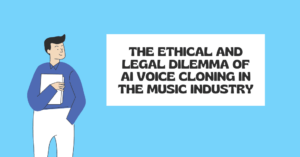Selecting a trade description when applying for a trademark registration appears to be a simpler task that most people overlook, but did you realize that preparing a trade description effectively can also safeguard your trademarks from refusals? Keep reading to learn more about Trade Description in Trademark Registration in India.
What is trade description?
As is well known, a trademark is used to identify particular goods or services with it in order to help the consumer recall the origin of the items and minimize consumer confusion. As a result, selecting the class of a given trademark is a critical subject to consider. NICE classification is a universal system that categorizes products and services into 45 different classes (Class 1-34 is for goods and Class 35-45 is for services), and a Trademark is filed under one or more classes depending on the type of goods and services offered under the canopy of the Trademark that is to be filed. Trade Description in Trademark Registration is nothing but a specific mention of the goods and services offered under a trademark.
Take the trademark “Burger King” registered under class 29 as an illustration. Now, the trademark’s trade description corresponds to the class 29 heading of the NICE classification system, namely MEAT, FISH, MILK AND OTHER DAIRY PRODUCTS, EDIBLE OILS, EDIBLE FATS, AND PICKLES (Image given below)
What has changed now?
Prior to the 2017 amendment to the Trademark rules, selecting one of the 45 Nice Classes and writing the trade description as the class’s title was sufficient, but now the applicant must describe the goods and services in great detail using terms acceptable to the Controller of Patents, Designs, and Trademarks (CGPDTM) in India. The exact trade description limits the monopoly to a single class and also serves as proof for the applicant to demonstrate how his Trademark differs from others based on the goods or services offered.
Take the same example of ‘Burger King’, which, if registered after the 2017 amendment, would be vulnerable to opposition from the registration due to the mere mention of class 29 heading. Therefore, under class 29, the trade description of the trademark “Burger King” must include the term “Burger” as well as its varieties and other culinary products offered by the business.
Why Trade Description is necessary?
As previously stated, a trademark only protects against the registration or use of a similar or conflicting mark in the class for which it is registered. For instance, the ‘Imperial Blue’ trademark is registered under NICE class 33, which covers alcoholic beverages. Therefore, no one else can register the same trademark under class 33, but they can file for registration under class 43, which covers restaurants (depending on whether or not the trademark ‘Imperial Blue’ is a well-known mark).
In addition, it is essential to recognize that even if the Class is the same for two conflicting marks, the sub-classes can be different, and the same can be used as a defence to overcome Registry objections. Consider another instance of the trademark ‘stopshop’ filed under class 25, pertaining to the retail sale of children’s clothing and apparel. And a trademark application for ‘topshop’ seeking registration in the same class, but for women-only clothes and apparel store. Therefore, even if the trademarks are almost identical and belong to the same class, the applicant may assert that his trade description is limited to women’s apparel whereas the conflicting mark is for children’s apparel.
Are there any Case Laws Concerning Trade Description?
One of landmark judgment which applied a line of distinction between the Nice class and sub-classes is Nandhini Deluxe v. Karnataka Co-Operative Milk Producers Federation Ltd, the question raised was Can deceptively similar marks be registered in the same class with different sub-classes?
- The respondents, Karnataka Co-operative Milk Producers, had been using the mark for milk and related products registered under class 29 since 1985. Appellant Nandhini Deluxe is a restaurant chain in Karnataka that used the mark in 1989.
- The Appellant has applied for registration of the said mark in class 29 for meat, fish, poultry, meat extracts, preserves, dried and cooked fruits and vegetables, jellies, jams, eggs, milk and milk products, edible oils and fats, salad dressings, and so on.
- The registrar approved the registration of the mark ‘Nandhini’ as distinct from the existing mark. The IPAB and the High Court of Karnataka both found the marks ‘Nandini’ and ‘Nandhini’ to be deceptively similar, with the only difference being the letter ‘H’ between the two marks.
- The case was ultimately heard by the Supreme Court, which determined that the marks are not deceptively similar after a thorough examination of both. The court noted that there is only a phonetic similarity between the two marks Nandini/Nandhini.
- The Supreme Court concluded that no one can have an exclusive right or monopoly over an entire class of goods, especially when the trademark is not used with respect to all of the goods in that class. Finally, the appellant ‘Nandhini Deluxe’ was granted permission to use the mark after removing milk and milk products from their class description.
What is the legal provision?
Section 104 of the Trade Marks Act penalizes a person or business that sells, hires, or exposes for sale a product or service that creates a misleading impression of a trademark or deceptive trade description.
Conclusion
To conclude, selecting the right NICE class for trademark filing is not enough; the relevant sub-classes must also be considered. Preparing a thorough class description rather than just headers of NICE classes offers as an extra point of distinction between the applied trademark and any conflicting marks. As a result, trade description is more than just a formality; it encompasses the scope of your registered trademark’s protection.










